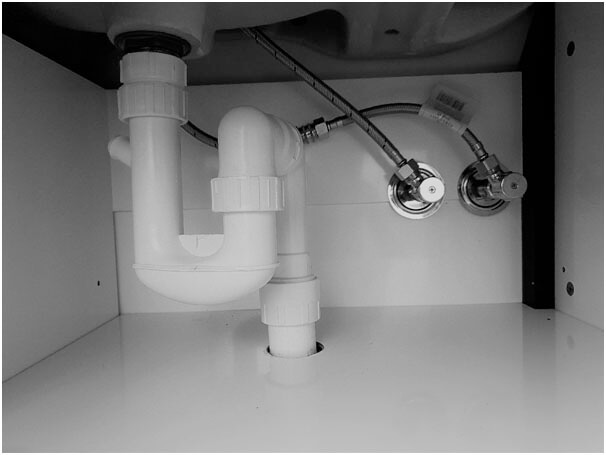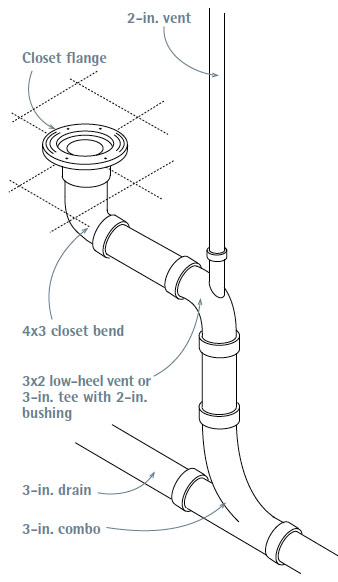Everybody seems to have their own unique theory on the subject of What Is a Plumbing Vent and Why Is It Important.

Correct ventilation in pipes systems is commonly forgotten, yet it is vital for preserving the capability and safety and security of your home's plumbing. Ventilation assists regulate air pressure, prevent the accumulation of unsafe gases, and make sure the reliable removal of waste. In this overview, we will certainly explore the relevance of proper plumbing ventilation, how it functions, and the benefits it gives your plumbing system.
Understanding Air Flow in Pipes
Ventilation in pipes describes the network of pipelines that permit air to stream with the drain system. These vents serve several purposes, including controling air pressure within the pipelines, stopping drain gases from going into the home, and assisting in the smooth flow of wastewater.
Exactly How Air Flow Functions in Plumbing Equipments
Atmospheric Pressure Regulation
Appropriate air flow keeps well balanced atmospheric pressure within the pipes system. When water moves via pipes, it displaces air. Without appropriate ventilation, this displacement can create adverse stress, bring about reduce drains pipes or siphoning of water from traps, which can create unpleasant odors to leak into the home.
Avoiding Sewage System Gas Build-up
Among one of the most crucial features of pipes vents is to avoid sewage system gases, such as methane and hydrogen sulfide, from accumulating within the home. These gases can posture serious health risks and are highly flammable. Vent pipelines allow these gases to get away securely outdoors.
Helping in Waste Elimination
Air flow helps in the effective elimination of wastewater by protecting against airlocks in the drain system. When air can move easily through the vents, it allows water and waste to move efficiently through the pipelines, decreasing the danger of blockages and back-ups.
Types of Plumbing Vents
Key Heap Vent
The major pile vent, additionally referred to as the air vent pile, is the primary vent in a pipes system. It prolongs from the primary drainpipe align through the roof, permitting gases to get away and fresh air to go into the system.
Branch Vent
Branch vents connect to the major stack air vent and offer specific components, such as sinks, bathrooms, and showers. These vents make certain that each fixture has ample air flow to function appropriately.
Air Admission Shutoff (AAV).
An Air Admission Shutoff (AAV) is a one-way shutoff that permits air to go into the pipes system without the demand for a conventional vent pipeline prolonging with the roofing. AAVs are typically used in renovations or locations where installing a common vent is not practical.
Indications of Poor Ventilation in Pipes.
Slow Draining Fixtures.
If your sinks, bathtubs, or commodes are draining gradually, maybe an indication of poor air flow. Poor air flow can develop a vacuum cleaner effect, making it hard for water to drain properly.
Gurgling Seems.
Gurgling audios originating from drains are frequently an outcome of air being sucked with water catches due to unfavorable stress in the pipelines. This is a clear indicator of inadequate air flow.
Undesirable Odors.
Sewer odors inside your home are a warning that your pipes system is not effectively ventilated. This could imply that drain gases are not being appropriately vented outside, leading to potentially hazardous conditions.
Common Air Flow Blunders.
Insufficient Vent Sizing.
Using undersized vent pipelines can bring about inadequate air circulation and pressure inequalities in the system. It's vital to make use of vents that satisfy the specific requirements of your pipes system.
Improper Vent Placement.
Placing vents also far from the components they offer can minimize their performance. Appropriate placement ensures that air can stream openly and successfully with the system.
Disregarding Code Demands.
Building codes supply specific standards for pipes ventilation. Overlooking these codes can result in a system that stops working to operate correctly and may cause pricey repairs or health hazards.
Advantages of Correct Air Flow.
Boosted System Efficiency.
Correctly ventilated plumbing systems run extra successfully, with less clogs, faster draining pipes, and less pressure on the pipes. This efficiency expands the life-span of the pipes system.
Improved Air High Quality.
By preventing sewer gases from entering your home, appropriate air flow adds to far better indoor air quality, making your living environment healthier and extra comfy.
Avoiding Water Damages.
Adequate air flow assists prevent water from being siphoned out of catches, which can result in sewage system gases going into the home and creating water damage with time.
Steps to Make Certain Appropriate Air Flow.
Consulting Plumbing Codes.
Constantly seek advice from neighborhood plumbing codes when creating or changing your plumbing system. These codes offer the needed standards for proper venting and ensure your system meets safety and security requirements.
Regular Evaluation and Maintenance.
Regular inspections can aid recognize prospective ventilation problems before they end up being major problems. Maintenance jobs, such as cleansing vent pipelines and looking for clogs, are important for keeping the system in good working order.
Professional Installment.
For brand-new setups or major modifications, it's important to employ an expert plumbing technician. They have the know-how to guarantee the air flow system is properly designed and mounted according to code.
Conclusion.
Correct ventilation is a critical element of any type of plumbing system, making certain that it functions efficiently and securely. By understanding the value of ventilation, recognizing the indications of inadequate ventilation, and taking actions to keep your system, you can protect against costly concerns and protect your home's air quality.
4 Things You Should Know About Your Plumbing Vents
What Plumbing Vents Are
Also called a vent stack, a plumbing vent is a vertical pipe attached to your drain line that runs through your roof. The plumbing vent pipe, or plumbing air vent, removes gas and odors from your plumbing system and allows fresh air to enter the pipes, helping the water to flow out of the drain pipes.
What Plumbing Vents Do
Plumbing vents have two basic functions. One of which is to allow unpleasant smelling wastewater and sewer gasses to escape your plumbing system instead of entering your home. Plumbing vent pipes are typically located on roofs, away from windows, to ensure the fumes exit the home completely.
The other function of the plumbing vent is to move fresh air into your plumbing system. This helps move water through every plumbing fixture in your house, like toilets and sink drains. Think of the way in which you need to let a little air into the bottle as you pour soda in order to make the drink flow smoothly.
Different Types of Plumbing Vents
True vent: This is the most common vent option. In simplest terms, a true vent is a vertical pipe attached to your drain line that exits through the roof. They often function as the main vent that other fixtures can connect to. Re-vent pipe or auxiliary vent: Attached to the drain line near specific plumbing fixtures, re-vent pipes run up and over to connect to the main vent. Common vent: Two plumbing fixtures installed on opposite sides of a wall are typically tied into the vent stack using something known as a sanitary cross. Wet vent: This venting option operates as a drain pipe and a vent at the same time. Wet vent drainage systems drain water from one fixture while venting the air from another. Although they’ve been used for over 100 years, wet vent systems have only recently been added to the plumbing code in many areas. If you’re planning on installing one in a bathroom remodel, make sure you check your local code prior to construction. Loop vent: For free-standing fixtures like kitchen island sinks, loop vents are ideal. These vent pipes run under the floor, rise from the P-trap, and create a loop inside the cabinet sink. Air admittance valve: An AAV is a one-way mechanical valve typically installed at the site of the plumbing fixture. AAVs allow venting to occur without having to tie into a larger venting system. They’re ideal for venting fixtures where you aren’t able to easily connect to an existing vent system. Common Plumbing Vent Issues
Although vent pipes typically don’t have water flowing through them, they’re still subject to many typical plumbing issues. For example, clogs are one of the most common problems associated with sewer vent pipes. If your vent pipe gets clogged, all of your plumbing fixtures tied into the vent stack will be affected.
A sink with a slow drain that bubbles and gurgles or a strong sewage smell around your toilet are both indicators that your toilet vent pipe is clogged. Because most vent pipes exit through the roof, old leaves, twigs or even a bird’s nest could be clogging the pipe.
Clogs in your vent pipe system cause a buildup of negative pressure, meaning that water won’t be able to flow out of your home very well. It’s similar to putting your finger over the opening of a straw to trap water inside. When you remove your finger, the water is able to flow out of the straw.
If you suspect you have any blockage in your vent, make sure you have a professional come examine the situation. Left unchecked, a blocked air vent can lead to other costly repairs, like leaks and sediment buildup.
Under Pressure
Pipe vents are essential aspects of a home’s plumbing system. Owning a home means learning about all sorts of things you never put much thought into before. But by understanding as much as you can about the important systems of your home, you can keep those budgets intact and those anxiety levels low.
https://www.homeserve.com/en-us/blog/home-improvement/plumbing-vents/

Do you like reading about Essential Plumbing Vent Pipes: Understanding Their Role? Try to leave a review further down. We will be glad to see your thoughts about this content. We are looking forward to see you back again later on. Sharing is nice. Who knows, you may be helping someone out. Thanks for your time. Return soon.
Rates